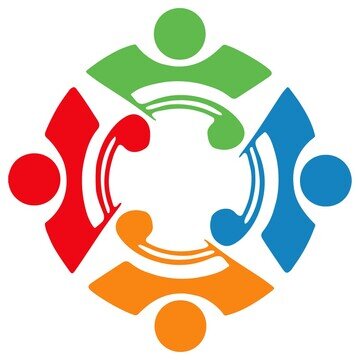66. Increase your introvert/extrovert sensitivity with these myths and facts
Do you identify as an introvert, extrovert, or somewhere in between? Have people misidentified you, or made assumptions that weren’t true? We like to put people in neat little boxes, but most of us don’t fit very well in them!
Data point of the week
According to ChatGPT, 30-50% of the U.S. population are introverts. This lands around 40% based on the results of Myers-Briggs and other similar assessments.
Carl Jung initially coined the terms “extrovert” and “introvert” in the early twentieth century. He wrote that introverts get exhausted by social interaction, while extroverts get anxious when left alone. Introverts need time alone to recharge, while extroverts are energized by socializing.
In her book Quiet, Susan Cain argues that our culture heavily favors extroverts. Extroverted ways of being have become the established norm, leaving little room for—and sometimes actively devaluing—introverted ways of being. This not only makes the world harder for introverts to navigate, it also deprives us of introverts’ creativity, innovation, and valuable thought leadership.
When it comes to work, Cain points out that despite the cultural elevation of extroversion, professionals who rise to the highest levels in their fields (musicians, chess players, athletes) spend more time practicing alone than in groups. Open office plans—designed to encourage social interaction—dramatically decrease productivity. Group brainstorming sessions generate fewer ideas of lower quality than the same number of people generating ideas on their own.
There are times when working alone is more productive than working in groups, and vice versa.
Reflection
There are a lot of different interpretations—and assumptions—about what it means to be introverted or extroverted. I thought it would be fun do a series of interviews that went beyond stereotypes to explore people’s more nuanced experiences of introversion and extroversion.
Today’s reflection comes from those conversations and responses to a Facebook post. Special thanks to Denise McGoldrick, Dorothy Jones, Ben Thompson, Danielle Pedalaborde, and Karen Lee Miller for your time and insights!
Myth: Introversion/extroversion are fixed or permanent personality traits.
Reality: People’s style of relating—and social vs. alone time needs—often changes over time. Interviewees spoke of changes (usually tilting toward introversion) as a result of the pandemic, having children, getting older, or other life transitions.
Myth: It’s easy to tell who’s an introvert and who’s an extrovert.
Reality: Most of the people I spoke with shared that other people often identify them differently from how they identify themselves. Introverts were frequently labeled as extroverts because they appeared at ease in social situations. Which leads to the next myth…
Myth: Introverts are shy, socially awkward, or socially anxious.
Reality: These words are often used interchangeably with introvert. And introverts can be all of the above. They can also be incredibly socially skilled and even downright talkative, leading to the confusion in the previous myth. Even Jung emphasized that introverts aren’t necessarily shy or insecure, they simply need solitude to recharge.
Myth: Extroverts are socially comfortable.
Reality: Extroverts can feel socially anxious and awkward too, they just deal with it differently (often by talking), which may make them appear more at ease.
One other thing that struck me from the interviews: a couple of extroverts shared that—when socializing with introverts—they often feel that the burden of making conversation falls on them. This makes the interaction feel more effortful than socializing with fellow extroverts.
Introverts shared that—when socializing with extroverts—it can be hard to insert themselves into the conversation, because the pace is faster.
Introversion and extroversion are not the clearcut categories they’re made out to be. Even the “re-charging” definition is murky. For example, I’m an introvert who loves socializing … sometimes. I feel recharged by certain social interactions but drained by others. I suffer if I don’t get enough alone time … and if I get too much! (This is starting to sound like Goldilocks, striving for “just right.”)
Maybe that makes me an ambivert, but I’d venture to guess that most introverts feel “fed” or “fueled” by certain kinds of social interactions.
Connection Skill & Action Step: Increase your introvert/extrovert sensitivity
When planning social events, group activities, or meetings, think about whether they’re inclusive of both introverts and extroverts. Create space for different ways of thinking and being. This isn’t only relevant to introverts and extroverts, but also cultural diversity, gender diversity, and neurodiversity (check out Temple Grandin’s TED talk, The world needs all kinds of minds).
Here are a few ideas to increase your introvert/extrovert sensitivity:
Examples of ways to increase your introvert/extrovert sensitivity include:
Provide a structured activity at a social event rather than—or in addition to—mingling or free-flowing socializing.
Do a quick “go-around” at meetings to give everyone a chance to speak, not only those who are most comfortable/assertive.
Invite ideas, opinions, and votes individually—such as over email—before discussing them in a group.
Questions (Please share your responses in the comments):
Do other people see you in the same way as you see yourself on the introvert-extrovert spectrum?
What do you like and not like about being an introvert/ambivert/extrovert?
Want to get a connection tip (like this one) delivered to your inbox weekly? Sign up for my newsletter!



